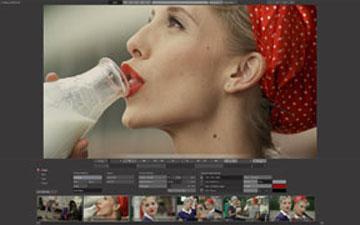UNDERSTANDING RAW & REDCODE RAW FILES
The latest generation of HD cameras (e.g. the Red One made by Red Digital Cinema) record images differently than traditional video cameras. Specifically, they use a variation of the format known as RAW, which has traditionally been used in still photography.
RAW Files
Adobe Systems was the first software company to use RAW for image storage. Photoshop, their flagship product, uses the PSD format, essentially a RAW codec.
RAW files are so named because they are not processed. In other words, everything the camera "sees" is recorded. Consequently, the highly detailed RAW files are considered the equivalent of film negative.
RAW files are too large for anything but storage. For practical use, such as in documents, they must be compressed into smaller formats like JPEG or GIFF.

Benefits
The main benefit of using RAW is that such files can contain large amounts of information. This makes it possible to record extremely high resolution images. In fact, the amount of recorded information is so great that all image adjustments can be saved for postproduction, including color, gain, and sharpening (diffusion).
Does this mean you don't have to white balance? Yes. You can white balance to give the RAW images a uniform look, but it is not necessary. Cinematographers are fond of diffusion filters to soften the image. Again, this can be applied in postproduction (although any cinematographer worth his salt will be reluctant to surrender such creative control).
Amazingly, correct exposure is the only adjustment that has to be made to the camera, and even this can be estimated. An unusual approach to camera setup, to say the least!
Enter REDCODE RAW
RAW files are proprietary and differ from from one manufacturer to another. Red Digital Cinema's version of RAW is called REDCODE RAW.
REDCODE RAW enables the huge 4K video images to be compressed into manageable file sizes, and then uncompressed with virtually no loss of image quality. Because they are RAW files, the compression is minimal--just enough for practical storage.
As of this writing, REDCODE RAW offers two levels of compression, REDCODE 28 and REDCODE 36. The latter provides less compression and is appropriate for highly detailed scenes such as, for example, wide shots.
As other manufacturers venture into the realm of ultra HD, they will invariably develop their own version of RAW. -Lou LaVolpe
Copyright © Film School Online!